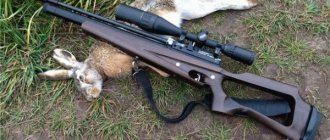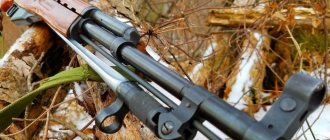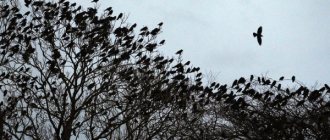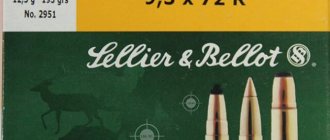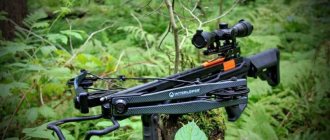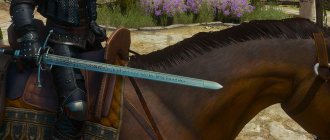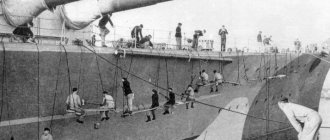Hunting is the most interesting and exciting hobby that allows you to spend time excitedly tracking down your prey. Each hunter can talk for a long time with special aspiration about his own trophies, funny and exciting events, the habits of animals and his own love of hunting. It’s difficult to describe the feeling when a gun hits the target, and now the faithful dog is carrying the desired prey in its teeth.
At all times, pheasant hunting has been considered truly the most exciting and valuable activity. The most tender meat is a worthy decoration for a royal feast. In the autumn, when the pheasant becomes especially fat, many hunters go out on the hunting trail to try their hand at catching this bird. In the case of an organized hunt, the cost of such pleasure is 700-900 rubles per released pheasant.
Game habitat
According to experienced hunters, the motley beauty can most often be found in dense thickets of fruit bushes. Rosehip bushes entwined with wild grapes often become a nesting site for pheasants. The heavy bird rarely rises to the wing, therefore it prefers to get food close to its habitat.
The pheasant eats the remains of field cereals, dry berries, and nuts. As a delicacy, the royal bird prefers to feast on the fruits of blackberries or sea buckthorn. Fleeing from danger, the pheasant develops a decent running speed, securely hiding in a dense thicket, which is why pheasant hunting in the Moscow region, as well as in other places, attracts many outdoor enthusiasts.
From the approach
This kind of beaver hunting with a gun is carried out in the morning, at dawn, when the family returns home after a night hunt. The males will be well-fed and tired, so hitting them will not be difficult. It is best to use zero-number shot so as not to damage the wounded animals. On land, the animals move so slowly that it is not difficult to catch up with them when detected.
Pheasant hunting methods
Man has come up with many ways to catch delicious game, but only a few of them are the most widespread:
- Hunting with a dog. A well-trained dog is a faithful assistant, helping to detect feathered game, take it on the wing and even catch up with a random wounded animal.
- Concealment method. A common hunting method during the evening twilight hour. At night, the pheasant roosts on the lower branches of trees. Experienced hunters take down a sleeping bird with a well-aimed pneumatic shot.
- Pheasant hunting with pneumatics. A hunter hiding in a shelter for several hours can wait for the right moment to shoot amazing game.
- Corral method. Hunting for a large number of people, including beaters and shooters. Having discovered places where pheasants live, the beaters drive the birds out into the open, where well-aimed shooters await them.
The method of hunting with air guns, being one of the most exciting, deserves a separate description.
From the boat
This method is best suited for those who have an inflatable or metal boat at home, and also a desire to hunt from it. In order for the fishery to end successfully, you need to stock up on a lot of patience. The boat must glide slowly and silently through the water, otherwise the beavers will hear the approach of a person and hide in their huts.
If you decide to go hunting in the dark, you will need the help of a partner. One person controls the boat and shines a car headlight, and the second keeps the weapon at the ready all the time. In this case, communication should take place exclusively through gestures.
On a pheasant with pneumatics
The force of an air rifle shot is much less than that of a firearm. A hunter going pheasant hunting with such equipment should be prepared for repeated shooting at game. Pheasant hunting requires certain knowledge of the habits and habitat of the bird. It is best to go hunting after scouting the area first. This will save the birder from long walks.
When catching a pheasant, it is important to remember that the first shot of an air gun is of primary importance. It is with this shot that you need to hit the target as much as possible; to do this, you should aim at the area of the bird’s head.
Some useful information about beavers
The beaver is one of those animals that is always on the alert. Among its favorite habitats, it gives the greatest preference to creeks, rivers and swamps. Mammals also live in places where there are a large number of bushes and trees, since they require a lot of material to build dams.
As a rule, there are about 10 individuals in one family, which occupy a kilometer-long stretch of the river. The number of beavers can be easily recognized by the small huts that they build near the shore. However, the entrance to such a shelter must be under water. Such precautions allow you to maximally protect your home from predators and uninvited guests.
The beaver is a very large rodent. Body weight can reach 35 kilograms, and the body grows in length up to 1.2 meters. It is worth noting that males are much smaller than females.
Almost the entire body of the rodent is covered with fur. There are small horny plates on the tail that help it maneuver quite well in the water. A beaver can hold its breath for up to 20 minutes, and only one breath of air is enough for it to plunge back into the water.
The age of a beaver is determined by its teeth. In young individuals, the width of the front incisors is only 3 centimeters, in adults – up to 9 centimeters. It is with the help of the upper incisors that they do most of the work.
Search for habitats
When pheasant hunting is underway, the price of the effort can be fully repaid with a royal trophy. However, tracking him down is not at all easy. It happens that a hunter, tired of aimless searches, having given up his hands, decides to return home; unexpectedly, the desired prey may take off very close by. Here the hunter cannot hesitate, such a chance comes extremely rarely, and it is due to the fact that the pheasant, by its nature, is a rather unique bird.
Moving among dense bushes in the hope of shelter, at one moment it can soar into the sky, often falling under the gun of an agile hunter. To detect bird settlement sites, you should walk around the area carefully and very quietly. The pheasant has excellent hearing; any extraneous rustle can scare it away.
Legislative side of the issue
Have you ever wondered when the beaver hunt opens? The season begins at the end of October. This fishery lasts almost three months. Official opening dates by region can be found at the local legal center where you received your hunting license. Remember that regional heads have the right to change the opening or closing dates of the hunting season due to the low animal population. You can also find out about when you can hunt beaver in the fall on the government services portal.
During fishing, the hunter must have the following documents with him:
- weapons license;
- hunting license;
- proof of identity (a driver's license will do).
Do not forget that hunting beavers outside the hunting season is considered poaching and is punishable by an administrative fine. If you do not want to get into trouble with the law, then it would be best to wait until the season opens. It is also strictly forbidden to shoot young animals and pregnant females.
With a pneumatic gun from an ambush
No less interesting is pheasant hunting in winter. In the harsh winter cold, it is difficult for birds to find food. He becomes less cautious, focusing on searching for food. The fattening area of valuable birds can be determined by numerous traces, pieces of bark, and remains of dry leaves on which game feeds in the winter.
Having found a suitable place, you should find a reliable shelter. Pheasants come to their feeding areas in small flocks. This makes it possible, having shot one bird, to wait for the arrival of the next group. On good days, experienced hunters catch up to a dozen individuals.
In addition, game can be lured to almost any place suitable for hunting. It is enough to scatter corn, wheat, and barley grains in an open clearing for several days. After 3-4 days you can come back for excellent hunting.
Boat selection
The modern market offers a large selection of inflatable and iron boats. It is best to use the latter option, since it is more stable on the water, cannot be pierced by branches sticking out of the river, and has a better shape for dealing with oncoming currents. In addition, iron boats are quite spacious, so you don’t have to worry about running out of space for the rest of your equipment.
Inflatable boats have the following advantages:
- compactness;
- noiselessness;
- ease.
Whatever option you decide to purchase, under no circumstances choose motor boats, as their noise can scare the animal even before it appears in sight.
Pheasant hunting with a gun dog
Pheasant hunting with a dog is a fun and exciting activity. To catch a trophy, pointing dogs are often used. Short, stiff hair makes it easier to get through dense thorny bushes. An excellent sense of smell helps the dog to pick up the scent of game and begin pursuit.
A hunter who notices that a dog is following the scent needs to quickly follow the furry assistant. The air rifle should be at the ready so that the hunter can shoot as soon as the bird rises to the wing.
The help of a faithful dog is invaluable when a dead bird falls into wild rose thickets that are impenetrable to humans. Only a cop can get the long-awaited prey and bring it to the owner’s feet. A dog is especially helpful when a wounded bird is trying to hide from persecution. If a pheasant has intact legs, it is capable of developing great speed; sometimes even a well-trained dog is unable to keep up with a wounded animal.
Of course, pheasant hunting is a long and tedious task. Hours of hiking, heavy equipment and long waits in ambush can wear out even a strong, strong man. However, the trophy obtained in the process will more than cover all the difficulties of an active hobby, becoming the personal pride of the hunter. And the prepared dish will become a worthy decoration of the festive table.
With a rifle behind a rogue
photo by the author
To do this you need a rifled weapon. In my opinion, the most suitable caliber for fox hunting is the 5.6mm. These are 5.6X39 and .223Rem cartridges. Both .22WMR and .22LR can be used. But these cartridges have a shorter range, their trajectory is steeper, and therefore the direct shot range is shorter.
You can, of course, also use 7.62 mm caliber cartridges (7.62X39, 7.62X51, 7.62X54R). But the trajectory of cartridges in this group is not as flat as, say, .223 Rem, and the power is excessive.
I'll digress a little. We have to admit that the American cartridge .223Rem has ballistic qualities. turned out to be more successful than ours. The only problem is the small range of equipment. Of course, you can buy imported cartridges, but they are expensive. I really like the .223 Rem. cartridge, but its bullets have one drawback: a very weak jacket. When it hits bones, it is destroyed, the bullet is deformed and produces an expansive effect. The skin deteriorates even when shooting at 300 m. A harder bullet is needed. I can’t say anything about the 5.6X39 cartridge in this regard; I haven’t used it. I took a fox from a small gun, but due to the steep trajectory it is problematic to use at long distances. Yes, and on small ones too. I remember in 2005 I was walking through a field along a reclamation ditch overgrown with bushes and birch trees. Suddenly, in the clearing, on the opposite side, I saw a fox walking perpendicular to the ditch, almost straight towards me. I rolled into a ditch, crossed to the opposite side, settled down next to a birch tree, put the trunk on a twig, and took aim. I decided to play sniper - there was an optic on the rifle - I placed the stump of the sight in the fox’s forehead and smoothly pulled the trigger. Shot. The fox shook her head and moved on. I didn't understand. He carefully opened the shutter and aimed there. Shot. The fox began to run away along the ditch. He fired two more rounds just after her, without hope of hitting her. The reason for the miss was the steep trajectory. The rifle was sighted at 100 m. At a distance of 20–30 m, the bullets passed above the aiming line by a couple of centimeters, and the fox’s forehead was small, so they flew between the fox’s ears. If the rifle had been chambered for .22WMR, there would have been no problems. And if I had not wanted to amuse my pride and had aimed lower, the fox would not have escaped. Otherwise I wanted to show my friends the hole between the fox’s eyes.
Now I use the IZH-18MN fitting in .223Rem caliber. Quite satisfied. The only problem is the workmanship: the bracket for attaching the optics is welded crookedly. I had to tinker with its installation. I settled on the good old PO-3.5. It turned out well - light, compact. This is hunting, so it is advisable to have a lighter weapon. Various Saigas and Vepris are a bit heavy.
Skis are also required. I have two pairs: “Taiga” and “Nast”. “Nast” – light, short skis. Good on crust and dense, compacted snow. In other cases - “Taiga”.
This hunt will not work without camouflage. The variety here is very great. I have been using a thick canvas camouflage coat in the form of a jacket and trousers for many years. Due to the fact that the camouflage coat is worn over outerwear, the pants slip down. I recommend using suspenders. I also have two white masks. One is knitted, the other is cotton. It can get a little hot in knitwear. Camouflage during this hunt is the main thing. Since the fox, like all canines, has black and white vision, with many shades of gray, it is necessary to camouflage perfectly. I even wrap the fitting in two pieces of white waffle fabric, securing it with paper tape. And this is not in vain. In 2008, I shot a fox from 150 meters. I simply missed. But the fox did not run away, but simply began to look around. She didn’t see me, although I was hastily reloading the gun. My face was covered with a white mask, I had white gloves on my hands, and the fitting was covered in white fabric. This allowed me to fire a second shot. True, I missed again. Then the fox took off. Having run 300 meters away from me, she sat down near the forest and began to examine the field, looking for the source of danger. But she didn't notice me. Naturally, I was on the leeward side. The fox sat and looked around the field. I walked in her direction, but was afraid that she would not wait for me, and decided to shoot. I take one ski pole with me. Using it as a stop, I aimed at the fox’s head, believing that the bullet would hit its chest with a lower trajectory. And so it happened. I also always carry binoculars with me. I bought myself a Chinese one. A simple six-fold, but compact and cheap. It is quite enough to see what is there in the field: a fox or a bush. Of course, serious binoculars are good, but where can you get the money? And here, for 200–300 rubles, you get a device that you can put in your pocket and not worry too much about its safety.
How is my hunt going? Very simple. I go out of the garden into the field and go skiing around the village through the fields. At the same time I look around. Having noticed a mousing fox, I approach it at 100–150 meters and shoot. All. Of course, I try to get additional information from my neighbors: where and, most importantly, what time they saw foxes in the field. Foxes stick to a time schedule, which makes hunting easier. A pleasant ski trip combines with hunting.
What I write below is my personal opinion based on my observations and does not claim to be of any scientific nature. As you know, the fox is a nocturnal predator. But at the end of winter and with unfavorable snow cover (deep snow, thick crust), the fox, in my opinion, does not have time to eat during the night, so it has to mouse during the day. This is where I wait for her. The tracks show that she follows the same route, moving no more than five meters away from the path. And she has enough mice.
Another problem is the change in the species composition of grasses on the field. If previously the fields were a smooth surface on which the fox could be seen far away, the cessation of agricultural activity led to the fields being overgrown with Chernobyl, cornflower, tartar, bushes and birch, which impairs visibility and allows the fox to move secretly across the field. This is how I see the situation this year.
It is no secret that the fox destroys the clutches and broods of birds nesting on the ground (hazel grouse, black grouse, capercaillie, woodcock), eats hare babies, and is a carrier of rabies. Limiting its quantity on land is a very important matter. But hunters have no interest in foxes. The “skin” interest is small - they pay little for a fox skin, but the ticket costs a decent amount. True, the ferret, the hare, and the squirrel are included in it. But I don't need them. I propose issuing free vouchers specifically for the fox. The hunting period for it can be extended until the end of March, if there is snow cover, and such hunting can be allowed only with rifled weapons (you will not shoot a hare with a carbine). This will increase the interest of hunters in fox hunting and will help reduce its numbers in the area and increase the number of other game.
Igor Suslov December 8, 2011 at 00:00
Safety precautions
First of all, you should be especially careful about a wounded animal. In defending itself, a beaver can use its sharp teeth, which can cause serious injury to the hunter. In this regard, it is worth following generally accepted hunting rules:
- Collect wounded animals only if you are sure that the animal is dead.
- Shoot only when the animal is at a suitable distance.
- Do not shoot at the bushes, because there may be people behind them.
- Do not kill cubs or pregnant females.
- Transport weapons unloaded.
It is also necessary to keep the weapon on safety at all times. It is allowed to remove the protection against an accidental shot only when an animal appears on the horizon.
We hope you now have a better understanding of the best time to hunt beaver and how to do it correctly. Follow the above safety rules - and fishing will bring you only positive emotions and good catch.
Tactics
In order for the hunt to be not only effective, but also as safe as possible, you need to know how to properly hunt beaver. The best moment to take a shot is when the animal comes out of the water onto the shore. It is necessary to kill the beaver with one shot, since even a seriously wounded animal can hide in the river. Even if he dies under water, it will be extremely difficult to get the wounded animal. Therefore, shoot only if you are sure that the shot will be fatal. Remember that the beaver has thick enough skin, so the twentieth gauge is unlikely to hit the vital organs of the animal.
Also, when hunting beaver with a gun, you can use special devices to lure the animal - decoys. They can be an ordinary pipe or an electronic device that independently reproduces the sounds that females make during the mating season. As a rule, such a decoy is left on the shore, and the hunter hides in ambush. The pipe will be relevant when hunting from a boat.



